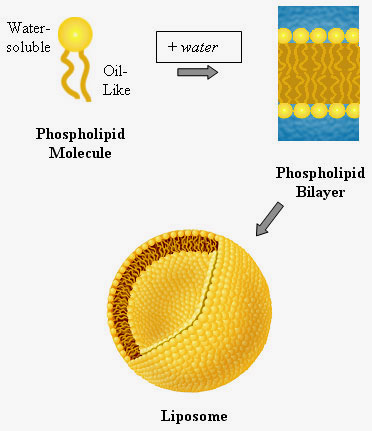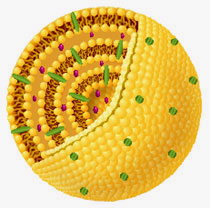Encapsula NanoSciences is a specialty company focused on providing liposome research, development and manufacturing expertise in the production of lipid-based nanoparticles, also known as liposomes, to clients and partners in both the academic and industrial sectors. Encapsula routinely provides custom laboratory-scale liposome preparations of drug encapsulated liposomes such as Clodrosome® (clodronate liposomes), Encapsome® (plain-control liposomes for clodronate liposomes), Doxosome™ (doxorubicin liposomes), Immunosome™ (reactive liposomes for antibody, protein conjugation), Immunodox™ (reactive liposomes for antibody, protein conjugation containing doxorubicin), Immunogene™ (reactive liposomes for antibody, protein conjugation containing genetic material), Immunofluor™ (reactive liposomes for antibody, protein conjugation containing fluorescent molecules for tracking), Genesome™ (liposomal DNA and RNA), Fluoroliposome™ (fluorescent liposomes), Atpsome™ (ATP liposomes), Cellsome™ (plain liposomes as artificial cell models) and Cosmesome™ (liposomes used in dermatology) to clients in universities and industrial research labs. Encapsula NanoSciences also recently introduced two oral liposomal product lines; NanoLife Nutra for pets and NanoLife Tonics for humans.
Encapsula NanoSciences originally started as a contract research and development company about 10 years ago. We have done many contract research and patent due diligence work for clients in government, pharmaceutical, biotechnology and medical devices sectors.
Encapsula NanoSciences has extensive collaboration with academic research laboratories and is currently working with synthetic chemists and cancer biologists at a major university in the development of new anti-tumor compounds which require a liposome delivery system in order to be dosed in vivo.
Encapsula NanoSciences is also working with the food technology industry in exploring the development of lipid-based antimicrobial’s as a solution to a variety of food safety issues in that sector.
Encapsula NanoSciences is dedicated to bringing liposome and other lipid nanoparticle technology into consumer products for daily use.
Technical Summary – An Introduction to Lipid Nanoparticles
The most common type of lipid nanoparticle, a liposome, can be thought of as a hollow sphere whose size ranges from 30 nanometers to 10,000 nanometers or 10 microns. A nanometer, usually abbreviated as nm, is 1 millionth of a millimeter. For comparison, a red blood cell is about 8,000 nanometers and viruses range from 25 – 200 nanometers. Liposomes are made from phospholipid molecules which are the same molecules that comprise cell membranes. Phospholipids are amphipathic, that is, part of their structure is water-soluble (hydrophilic or water-loving) and the other part is oil-like (hydrophobic or water-fearing or fat-soluble). Therefore, when added to water, the water-soluble part of the phospholipid interacts with the water and the oil-like part of the molecule avoids the water.
In order to accomplish this, the phospholipids align themselves side-by-side with their oil-like portions orienting themselves towards each other as shown in cross-section in the middle figure below. This structure is known as a phospholipid bilayer. This bilayer extends itself in water to form a sheet which then curls into a liposome. Liposomes smaller than about 200 nm usually only consist of one bilayer (unilamellar liposomes) but larger liposomes can contain concentric layers of lipid (like an onion) or several smaller liposomes can be formed inside large liposomes. These larger multicompartment liposomes are known as multilamellar liposomes.
The structure of a phospholipid molecule, a lipid bilayer and a liposome.

The interior of liposomes is filled with water and therefore, molecules which are soluble in water can be encapsulated in the interior of the liposome. A less recognized but very important property of liposomes is that molecules which are not water soluble, or oil-like, can be entrapped in the oil-like portion of the phospholipid bilayer. Consequently, liposomes can serve as carriers for all types of molecules including both water-soluble and water-insoluble compounds. In fact, a single liposome can carry both types of molecules or combinations of each type of molecule.
This cartoon represents a multilamellar liposome. It contains many layers of phospholipid with water in between the layers. Hydrophobic compounds (green) insert between the phospholipids forming the bilayers of the liposome while water-soluble compounds (pink) are entrapped in the aqueous space between the bilayers.

Liposomes can be made of a single type of phospholipid or by mixtures of different phospholipids. Non-phospholipid components such as cholesterol, fatty acids and other lipid soluble molecules such as vitamin E are commonly added to liposomes. By varying the type of phospholipid used to make liposomes and/or by attaching certain molecules to the surface of liposomes, they can be engineered to have many useful properties. Liposomes, with or without entrapped compounds, can be designed to
- Release their contents when they reach a specific temperature.
- Release their contents at a specific pH value.
- Target certain tissues or cell types by changing the types of lipids in the liposome.
- Target tissues, cell types or specific proteins by attaching antibodies to the surface.
- Avoid certain tissues or cells by attaching complex sugars to the surface.
- Evenly distribute fat-soluble (oil-like) compounds such as certain vitamins, antioxidants, antibiotics, flavors, etc. which often can’t be mixed in water-based products including most foods.
- Fuse with cells, which is important in delivering DNA to a cell.
- Serve as model cell membranes making it easier to study specific cellular processes and how certain molecules, such as drugs, interact with cells.
- Protect compounds from acidic and enzymatic degradation in the stomach and intestine by using certain molecules to coat the liposome.
- Protect compounds such as vitamins and antioxidants from premature oxidation for increased shelf-life.
- Enhance the intestinal absorption of compounds by coating with certain molecules.
- Carry drugs across the nasal mucosa (nasal drug delivery).
- Deliver drugs directly to lung tissue by inhalation of the liposomes.
- Carry fluorescent dyes or other types of molecules which allow the liposomes to be tracked in the system to which they are added.
These are only a few of the applications for which liposomes have been used. Reports of new types of liposomes and as well as new uses for liposomes seem to appear almost daily.
As stated earlier, liposomes are not the only type of lipid nanoparticle that can be used in some of the above-listed applications. Some phospholipids tend to form cochlear structures which can be envisioned as a phospholipid bilayer sheet that is rolled up like a jellyroll; these types of lipid nanoparticles are currently being investigated for oral drug delivery among other applications. Certain drugs and other molecules, often those which have amphipathic properties similar to phospholipids, form bilayer-like complexes with phospholipids resulting in nanosized particles but usually don’t have the capacity to entrap water-soluble compounds. This is not a problem since the compound of interest is incorporated into the nanoparticle structure. The advantages to this type of nanoparticle are that a relatively large amount of drug is incorporated into the nanoparticle and that they provide stable suspensions of amphipathic molecules in water. Amphipathic molecules are often very difficult, or even impossible, to dissolve in water alone. Lipid complex and cochlear nanoparticles are also useful in systems where osmotic stress (very high or very low salt concentrations) is present.
The scientists at Encapsula NanoSciences have experience in all types of lipid nanoparticle systems including selecting the best type of nanoparticle for a particular application.











